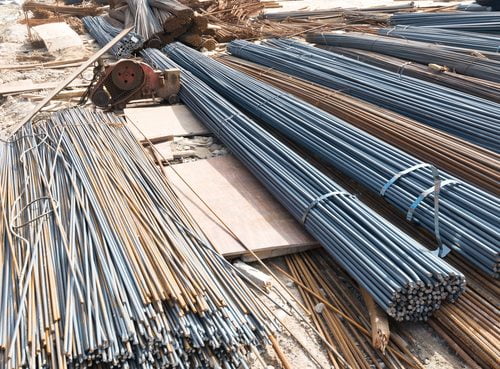How to Avoid Rust

Keeping Stainless Steel Products Clean
September 25, 2016
Staying Safe While Working With Steel
October 7, 2016Rust is among the primary concerns for people who buy steel or other metals on a regular basis. Not only is it an ugly eyesore on your steel project, rust’s corrosive properties can cause significant damage to your metal products.
As a top steel supplier in Utah, we at Wasatch Steel know that our clients take rust seriously. Here are some tips for avoiding rust during and after your steel projects.
What is Rust?
A basic knowledge of rust’s properties can help you avoid it easily.
Rust is a form of iron oxide which forms when iron or iron alloys (such as steel) interact with oxygen in the air and cause corrosion. The primary cause for rust is water, which can penetrate microscopic gaps in metals and begin slowly causing them to simultaneously expand and weaken. If salt is present, the process only accelerates.
Several other factors can cause rust, however. Let’s take a look at a few.
Design
Reputable steel suppliers such as Wasatch Steel can lend a big hand in preventing rust during the steel design stage. Cavities are generally to be avoided, and water drainage holes can be considered in some situations. However, even well-designed steel and metal can still go through rust.
Coating
Covering your steel or metal with a coating substance that helps keep water out can be a great way to avoid rust building up in these products. Many of these substances are easy to locate and cheap to purchase. There are two broad coating categories:
- Organic coating: Oil-based coatings such as paint are a barrier against corrosive items
- Powder coating: Generally applied using a spray process with a few different chemical options. Steel is then heated, turning the powder into a protective film
Galvanization
Galvanization is a special coating process involving metallic zinc. In addition to protecting the steel from water and other corrosive elements, the zinc also absorbs the oxidization process of any rust that does make its way through to the metal.
Bluing
A rarer technique used mostly for small steel items like firearms, bluing involves immersing the metals in a solution of potassium nitrate, sodium hydroxide and water. It only offers limited protection, however. Metals will appear blue or black after this treatment, hence the name.
Maintenance
Simplest of all is regular basic maintenance on your steel and other metals. Small areas of rust can be removed using a razor blade, and you can re-apply coating agents to help protect your products.
Dealing with rust issues, or have any other steel concerns or purchase needs? The service professionals at Wasatch Steel are here to assist you.



